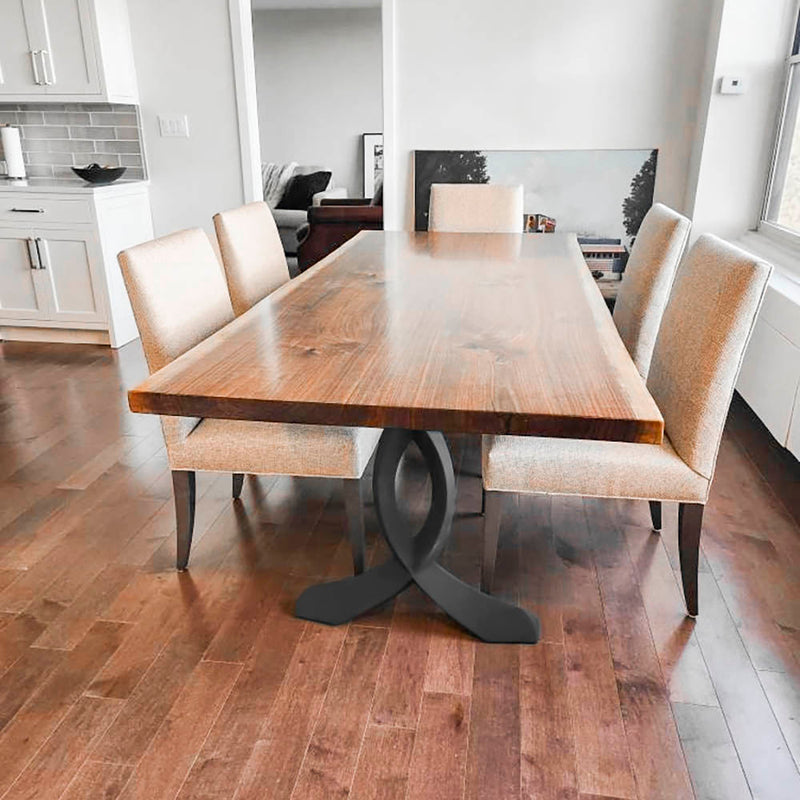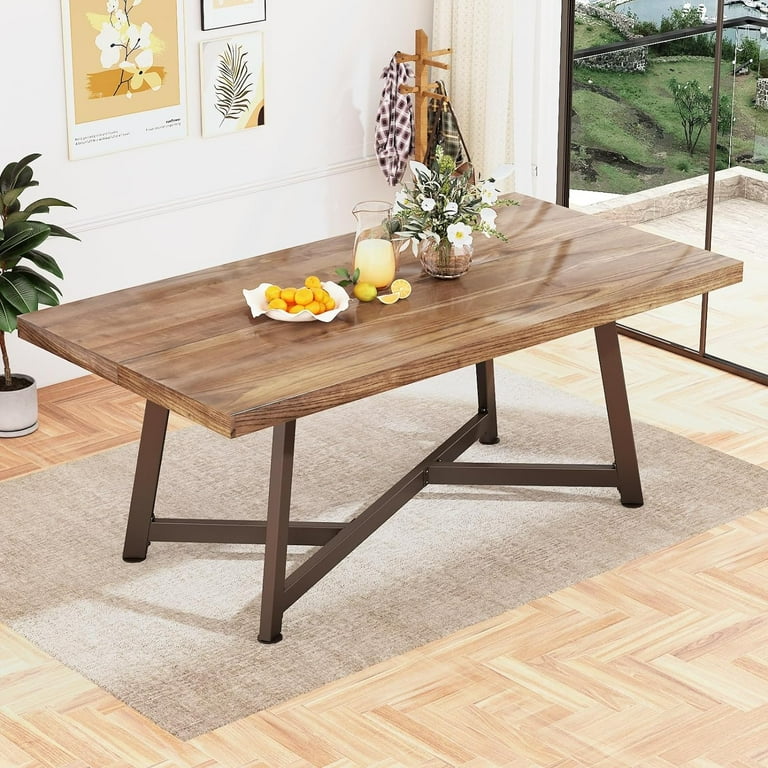Add Charm and Elegance to Your Space with Distinct Dining Room Table Legs
Add Charm and Elegance to Your Space with Distinct Dining Room Table Legs
Blog Article
From Standard to Modern: Locate the Perfect Eating Area Table Legs for Your Design
While traditional designs such as cabriole and transformed legs stimulate a sense of ageless refinement, contemporary styles like barrette and geometric alternatives present a chance for striking visual rate of interest. As you take into consideration these components, the question remains: just how can you perfectly integrate these diverse leg designs to produce a harmonious eating experience?
Comprehending Table Leg Styles
The variety of eating space table leg designs can dramatically affect both the looks and functionality of the space. Each leg design adds one-of-a-kind functional functions and aesthetic elements, satisfying varied layout choices and usage needs. Recognizing these designs is important for choosing the best dining table that aligns with your total interior decoration vision.
For instance, tapered legs supply a tidy, timeless appearance that can boost a space's beauty, while pedestal bases provide stability and make best use of legroom, making them excellent for smaller sized spaces. Barrette legs, a trademark of mid-century contemporary design, present an industrial panache, permitting an airy, open feeling. Trestle legs evoke rustic charm, offering durable support and a feeling of timelessness.
Additionally, the option of materials plays a substantial function. Wood legs can bring warmth and structure, whereas metal choices frequently share a sleek, modern vibe. Inevitably, comprehending table leg designs is necessary for creating a natural dining area that reflects individual style while making sure practicality and convenience. By thoughtfully taking into consideration these aspects, you can boost both the practical and visual appeal of your dining area.
Standard Table Leg Options
When selecting dining-room table legs, typical options typically personify ageless sophistication and workmanship. These layouts mirror a rich heritage and a commitment to top quality, making them optimal for those that appreciate timeless aesthetic appeals.
One of the most legendary traditional leg styles is the cabriole leg, defined by its stylish rounded shape. This style usually features ornamental makings and is most frequently located in Queen Anne and Chippendale furnishings. An additional preferred alternative is the transformed leg, which boasts a series of smooth, rounded shapes that offer a traditional look while preserving stability.
Additionally, the straight leg, while easy, provides a sturdy and unadorned framework that can blend seamlessly with a selection of tabletop styles. For those drawn to ornate detailing, claw-and-ball feet legs stimulate a feeling of majesty and can work as a stunning focal point in any dining space.
Last but not least, stand bases, although not strictly legs, offer a different typical alternative that enables ample legroom and can be wonderfully sculpted. Each of these traditional leg designs adds to the overall setting of a dining room, weding function with visual charm.

Modern Table Leg Styles
Modern table leg designs supply a varied variety of designs that emphasize tidy lines and ingenious products. These styles frequently focus on capability while functioning as striking prime focus within an eating room. Minimalist aesthetics prevail, with legs crafted from materials such as steel, glass, and engineered wood, which contribute to a airy Continue and modern feeling.
One popular design is the hairpin leg, defined by its slim, tapered structure that offers stability without frustrating the table top (dining room table legs). This design is typically found in mid-century modern furniture and can easily enhance numerous table forms. An additional trend is making use of geometric forms, where legs may take on angular or unbalanced forms, adding aesthetic passion and a touch of artistry

Mixing Designs for Special Areas
Frequently, property owners seek to create one-of-a-kind eating areas that mirror their individual design by blending various design components. This method permits the incorporation of varied appearances, over here resulting in a harmonious yet distinctive setting. Coupling a rustic wood table with sleek, modern metal legs can create a captivating contrast that boosts the space's total charm.
Additionally, incorporating vintage table legs with contemporary table tops can evoke a feeling of history while keeping a modern-day perceptiveness. Such combinations not just showcase specific taste however likewise encourage imagination, allowing house owners to curate a space that really feels both personal and welcoming.
Shade plays a crucial function in this blending procedure; picking table legs that complement or comparison with the existing color plan can boost aesthetic rate of interest. For instance, whitewashed legs can soften the boldness of a dark table surface area, developing a well balanced aesthetic.
Tips for Selecting the Right Legs
Selecting the right table legs is necessary for achieving both performance and visual allure in your dining space. Begin by thinking about the total style of your space. Standard setups profit from legs that include complex carvings or turned layouts, while modern spaces may require smooth, minimal designs.
Following, analyze the elevation and stability of the legs. dining room table legs. Basic eating tables vary in between 28 to 30 inches in elevation, so ensure the legs complement this dimension for convenience. Additionally, robust materials, such as hardwood or metal, can enhance stability and durability
Examine the leg form also-- choices consist of right, tapered, or pedestal designs. Straight legs offer a classic look, while tapered legs can include a touch of beauty. Pedestal bases offer adequate legroom and are suitable for smaller sized areas.
Final Thought
In recap, selecting the suitable eating space table legs needs cautious factor to consider of both traditional and modern designs. Typical choices such as cabriole and turned legs provide timeless elegance, while modern-day layouts like barrette and geometric forms provide a modern touch. By integrating leg design, height, and material with the total décor, a natural and inviting atmosphere can be accomplished. Eventually, the selected table legs navigate to this website should mirror the preferred aesthetic, boosting the dining experience within the space.
The variety of dining space table leg styles can significantly affect both the looks and performance of the space. Inevitably, comprehending table leg designs is necessary for creating a natural dining area that reflects individual style while making sure usefulness and convenience.One of the most legendary standard leg designs is the cabriole leg, characterized by its elegant curved form. Straight legs provide a timeless look, while tapered legs can include a touch of elegance.In recap, selecting the suitable dining space table legs needs mindful consideration of both conventional and modern-day styles.
Report this page